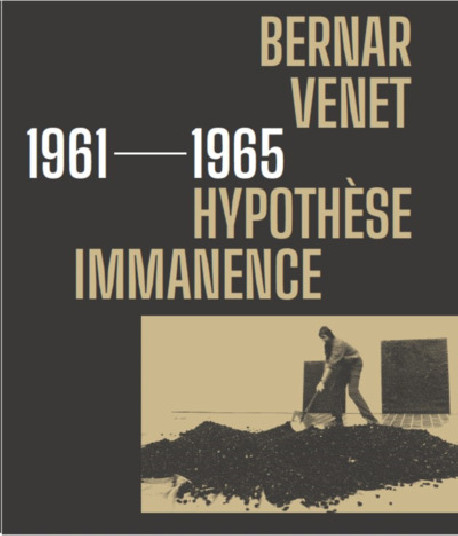No products
Product successfully added to your shopping cart
There are 0 items in your cart. There is 1 item in your cart.
Our webstore uses cookies to offer a better user experience and we consider that you are accepting their use if you keep browsing the website.

20th Century Sculpture
- New Art Books
- Exhibition catalogue
- Highlights
- Art Book Sale
- Museum's Shop & Gifts
- Bilingual art books and foreign editions
- Children's Books
- Art History
- Painting
- Architecture
- Sculpture
- Drawing & Engraving
- Photography
- Contemporary art
- Decorative Arts & Design
- Art Techniques
- Critics
- Entertainment art books
- Civilisations
- Partners Reviews
Bernar Venet 1961-1965 – Looking Forward!
Recognized today as one of France's leading artists, Bernar Venet's work is exhibited all over the world. While his monumental steel sculptures are widely distributed, his early works, from the late 1960s, are much less well known to the general public.
1 item in stock
| Model | 9782363063533 |
| Artist | Bernar Venet |
| Author | Arnaud Pierre |
| Publisher | Bernard Chauveau |
| Format | Ouvrage broché |
| Number of pages | 216 |
| Language | Bilingue Français / English |
| Dimensions | 300 x 240 |
| Published | 2024 |
| Museum | Biblioteca Nazionale Marciana, Venise |
Published to coincide with the Venice Biennale 2024, during which Bernar Venet will present works from this period at the Bibliotheca Nazionale Marciana.
As part of the prestigious Venice Biennale 2024, a major retrospective of the artist's work from 1961-1965 has been organised, presenting almost all of his work from this period. Following on from Les Origines 1961-1966, which is now out of print, this new edition, completely revised in format and expanded with previously unpublished iconography and archives, is now the definitive reference book on the early work of an artist who left a lasting mark on the history of art.
From the age of 19, the artist began his research into materials. He began the Goudrons series. In 1963, with the Reliefs cartons, he sublimated this medium by spraying it with glycerophtalic paint, evacuating all subjective and lyrical elements generated by the artist's hand.
He preferred bitumen and industrial lacquer to oil paints, thus breaking with the pictorial academicism of the gestural abstraction of the time. In the same years, he produced his first sound piece, Gravier Goudron, which consists of a recording of the sound of a wheelbarrow wheel on gravel. His performance dans les détritus, analyzed in this book by Maurice Fréchuret, and Tas de chardon, about which Bernard Ceysson has written a 200-page book, are now emblematic works from his more radical period.
Recently viewed items








